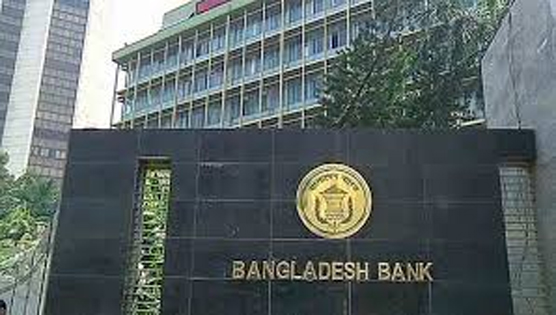
Special Correspondent: Remittances have emerged as the strongest pillar of Bangladesh’s economy, playing a vital role in its stability amid ongoing crises.
While the United States and the United Arab Emirates (UAE) had dominated remittance inflows for the past two years, with the US consistently delivering surprisingly high figures, a significant shift has now been seen.
The Kingdom of Saudi Arabia has now re-emerged as the leading contributor, notably doubling its remittance figures in the last three months of the last fiscal year.
In the just-ended FY 2024-25, Bangladesh received a record $30.33 billion in remittances- 27% higher than the amount of FY2023-24.
Although remittance from the US declined during the last three months (April, May and June), it still topped the list at the fiscal year-end with $6.87 billion, accounting for 22.65% of total remittance.
In contrast, Saudi Arabia and the UAE sent nearly equal amounts by the end of the year due to a surge in the last three months. During this period, Saudi Arabia sent $4.26 billion and the UAE $4.16 billion.
According to Bangladesh Bank data, in June alone (the last month of FY 2024-25), Bangladesh received $238 million from the US and nearly double- $469 million- from Saudi Arabia.
In May, remittance from the US stood at $223 million, while Saudi Arabia contributed more than 2.5 times of the amount- $533 million.
Similarly, in April, the US sent $330 million, while Saudi Arabia sent $491 million.
Surprisingly, from July to March of FY2024-25, the US remained the top source of remittance, with Saudi Arabia far behind. Throughout this period, the top contributor varied between the UAE, the US and the UK.
Explaining the matter, Arief Hossain Khan, BB spokesperson and executive director, said, “It is natural for Saudi Arabia to send the highest remittance since the largest number of Bangladeshi expatriates resides there. Historically, that has always been the case. Due to some changed circumstances, Saudi Arabia had fallen behind, but that has now been corrected.”
He further said, “Bangladesh Bank has instructed banks to accurately report remittance based on the actual country of origin. This change in reporting practice has altered the scenario.”
Former lead economist at the World Bank’s Dhaka office Zahid Hussain told the Daily Sun that the overall rise in remittances may have stemmed from increased transactions through legal channels.
“Compared to Bangladeshis in the Middle Eastern countries, expatriates in the US are relatively in better professional positions. As a result, their earnings are higher, which allows them to send more money back home. Money sent by them is also invested in bonds,” he said.
According to the central bank data, other countries which are the top 10 remittance senders are the UK, Oman, Malaysia, Kuwait, Italy, Qatar and Bahrain.
Following the advice of the International Monetary Fund, the exchange rate of the dollar has been made market-based. Despite this, the market remains stable. After Ahsan H Mansur took charge as the BB governor, the exchange rate was significantly increased and fixed at Tk122 per USD. Some banks are also offering an additional 2.5% incentive on top of that.
Why more remittances from Saudi Arabia in the last 3 months
Expatriates send money home primarily through two formal channels: banks and exchange houses. The majority of remittances flow through exchange houses, which sell the collected foreign currency to banks, who then pay the beneficiaries.
A large number of exchange houses registered in the US and the UAE handle these transactions. So, regardless of where the money is originally sent from, it is cleared through the registered countries’ exchange houses. These companies maintain country-wise remittance records. However, many banks often do not segregate the sources and report the remittance based on the clearing country, leading to inaccurate data.
Bangladesh Bank has now instructed banks to strictly follow the practice of reporting remittance according to the original sending country.
An official of the central bank explained the matter, “If a Bangladeshi bank buys $2 million from a US-based exchange house, and that amount includes remittances from five different countries, the bank might report the entire amount as coming from the US. This misreporting led to an inaccurate picture for years. Now, banks must report the data properly, which is correcting the trend.”
Scenario in past fiscal years
In FY 2023-24, the highest remittances were from the UAE at $4.60 billion, followed by the US at $2.96 billion and Saudi Arabia at $2.74 billion.
In FY 2022-23, Saudi Arabia was the top country with $3.76 billion, followed by the US at $3.52 billion and the UAE at $3.03 billion.
In FY 2021-22, Saudi Arabia again led the chart with $4.54 billion, followed by the US at $3.44 billion and the UAE at $2.07 billion.
In FY 2020-21, Saudi Arabia topped the list with $5.72 billion, while the US followed it with $3.46 billion and the UAE contributed $2.44 billion.
Manpower Export
According to the Bureau of Manpower, Employment and Training (BMET), Saudi Arabia has remained Bangladesh’s top labour market since 1976, receiving 36% of the total workforce exported.
However, over the past year, overseas manpower exports have dropped by about 30%. Currently, around 90% of Bangladesh’s foreign employment depends on just three countries, posing a significant risk.
In 2024, 1,011,869 workers went abroad with 95% of them heading for just five countries: Saudi Arabia, Malaysia, Qatar, Singapore and the UAE. This is nearly 30% less than the 1,307,890 workers sent in 2023.
According to the BMET data, in the first half of 2024, 73% of total manpower exports went to Saudi Arabia, 9.32% to Qatar and 6.28% to Singapore. These three countries alone accounted for 90% of the total manpower exports. The remaining countries combined received only 10%.





